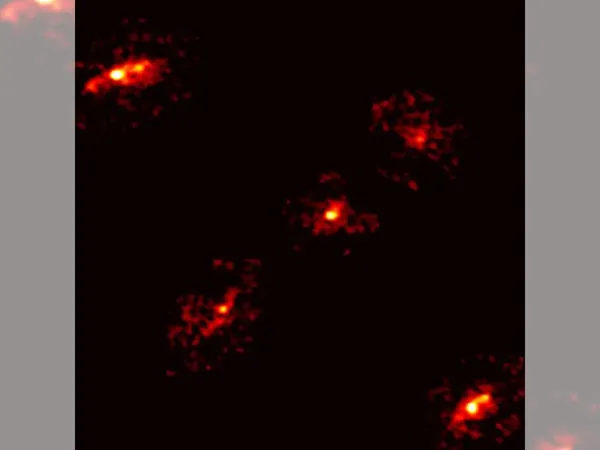
Unveiling the Cosmic Enigma: The Astonishing Fifth Image of the Einstein Cross
2025-09-20
Author: Kai
A Groundbreaking Discovery in the Cosmos
In a stunning revelation that has left scientists buzzing, researchers have uncovered a remarkable cosmic formation known as the Einstein Cross—but with a twist. This isn't your standard astronomical sight; this formation features an astonishing fifth image at its center that has baffled experts from Rutgers University and beyond.
The Mystery Behind the Einstein Cross
Typically, an Einstein Cross is a rare optical phenomenon where the light from a distant galaxy is bent around the gravitational pull of intervening galaxies, creating four distinct images positioned around a central point. However, the newfound version of this cosmic marvel presented a fifth image right at its core, prompting immediate intrigue and skepticism among astronomers.
An Unexpected Twist—A Hidden Halo of Dark Matter
The discovery was led by Pierre Cox, a prominent French astronomer who first identified this anomaly in data collected from the Northern Extended Millimetre Array (NOEMA) in the French Alps. Initially suspecting a technical glitch, the researchers soon realized they were witnessing something truly extraordinary—a hidden halo of dark matter was responsible for this puzzling fifth image.
Theoretical astrophysicist Charles Keeton noted the impossibility of such a phenomenon without an unusual mass influencing the light bending. His team partnered with Cox and fellow Rutgers researcher Andrew Baker to delve deeper into the enigma.
From Observation to Revelation
While studying a distant galaxy known as HerS-3, Cox utilized advanced radio telescopes in both the French Alps and Chile, yielding striking results. As he reviewed the data, the light from HerS-3 split into not four, but five images. Despite attempts to discount the fifth image, it persisted, demanding explanation.
Modeling the Cosmic Puzzle
The Rutgers team embarked on the challenge of constructing a computer model to unravel the gravitational lensing at play. Despite their best efforts to explain the five-image configuration using just the visible galaxies, the models fell short. It was only when they incorporated a dark matter halo into their calculations that the pieces began to fit together.
"That's the power of modeling. It helps reveal what you can't see," Keeton remarked, highlighting the significant role of theoretical astrophysics in understanding our universe.
A New Chapter in Dark Matter Research
This groundbreaking discovery is set to be published in The Astrophysical Journal and represents a rare opportunity for scientists to further investigate the elusive dark matter enveloping the surrounding galaxies. As researchers continue to peel back the layers of cosmic mysteries, the implications of this find could redefine our understanding of the universe.



 Brasil (PT)
Brasil (PT)
 Canada (EN)
Canada (EN)
 Chile (ES)
Chile (ES)
 Česko (CS)
Česko (CS)
 대한민국 (KO)
대한민국 (KO)
 España (ES)
España (ES)
 France (FR)
France (FR)
 Hong Kong (EN)
Hong Kong (EN)
 Italia (IT)
Italia (IT)
 日本 (JA)
日本 (JA)
 Magyarország (HU)
Magyarország (HU)
 Norge (NO)
Norge (NO)
 Polska (PL)
Polska (PL)
 Schweiz (DE)
Schweiz (DE)
 Singapore (EN)
Singapore (EN)
 Sverige (SV)
Sverige (SV)
 Suomi (FI)
Suomi (FI)
 Türkiye (TR)
Türkiye (TR)
 الإمارات العربية المتحدة (AR)
الإمارات العربية المتحدة (AR)